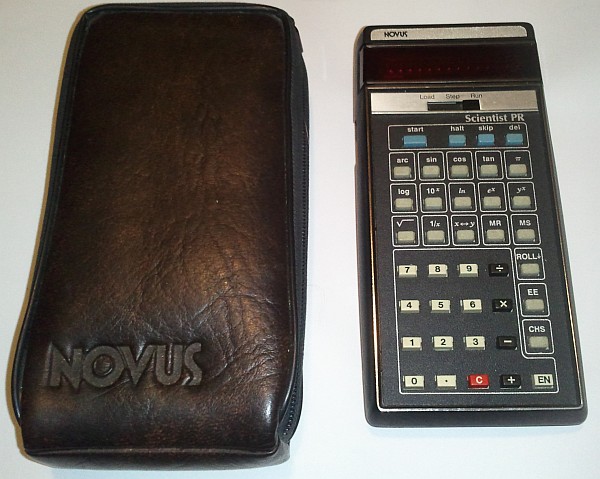You never know what you’ll find in thrift stores. The other day, I found an interesting old calculator at a local Goodwill. The LED display and single-function keys hinted that it was of 1970s or 1980s vintage — but an unusual “load/step/run” switch implied that it was in fact a programmable calculator or simple computer. Sequences of operations up to 100 steps long can be loaded in and then run. It’s not really a proper computer — more of a calculator with macro capability.
True computer or not, this was apparently one hell of a calculator, back in 1975. According to the April 1975 issue of IEEE Spectrum, the Novus 4525 retailed for $169.95. That’s about $723 in 2012 dollars.
The first step in getting it running again, since it didn’t come with its AC adapter, was to determine what kind of power supply it needed. Looking inside the case, the barrel connector appears to be directly connected across a three-cell NiCd battery — with the tip connected to the positive terminal. The battery is a Radio Shack replacement pack number 23-170 (three 900mAh NiCd AA cells in series.) Since this doesn’t seem to be the original battery pack, it’s hard to say what that was — perhaps a sealed lead-acid pack? At any rate, a roughly 4VDC power supply should do the trick. For now, I just charged up the NiCd pack with a bench power supply.
One of the distinguishing features of the Novus is its use of Reverse Polish notation (RPN), also known as “postfix notation.” In order to, for example, add four and five, the user enters 4, ENTER, 5, +. Postfix notation is associated with a stack, and therefore the Novus implements a four-position stack. Mathematical expressions can be entered unambiguously (no need for rules such as PEMDAS), as long as the user is careful not to overflow the stack.
For someone used to modern calculators, the Novus’ accuracy can be somewhat disquieting in certain situations. Performing a straightforward operation like 3*3 gives the expected result of 9. A slightly more complex method such as 3^2, however, gives an answer of 8.9999988 — and takes just over two seconds to come up with this dubious answer.
According to the manual, the Novus’ programming capabilities seem relatively limited. Operations that could normally be entered manually can be executed semi-automatically — but the calculator seems to lack any looping or branch control functionality, making it not Turing-complete. That functionality would have to wait a few more years, for calculators like the Tandy Pocket Computers. Still, it’s pretty impressive for a pocket calculator from 1975.



I’m picturing being in a Goodwill in 2049, and finding an iPad mini for $.99.